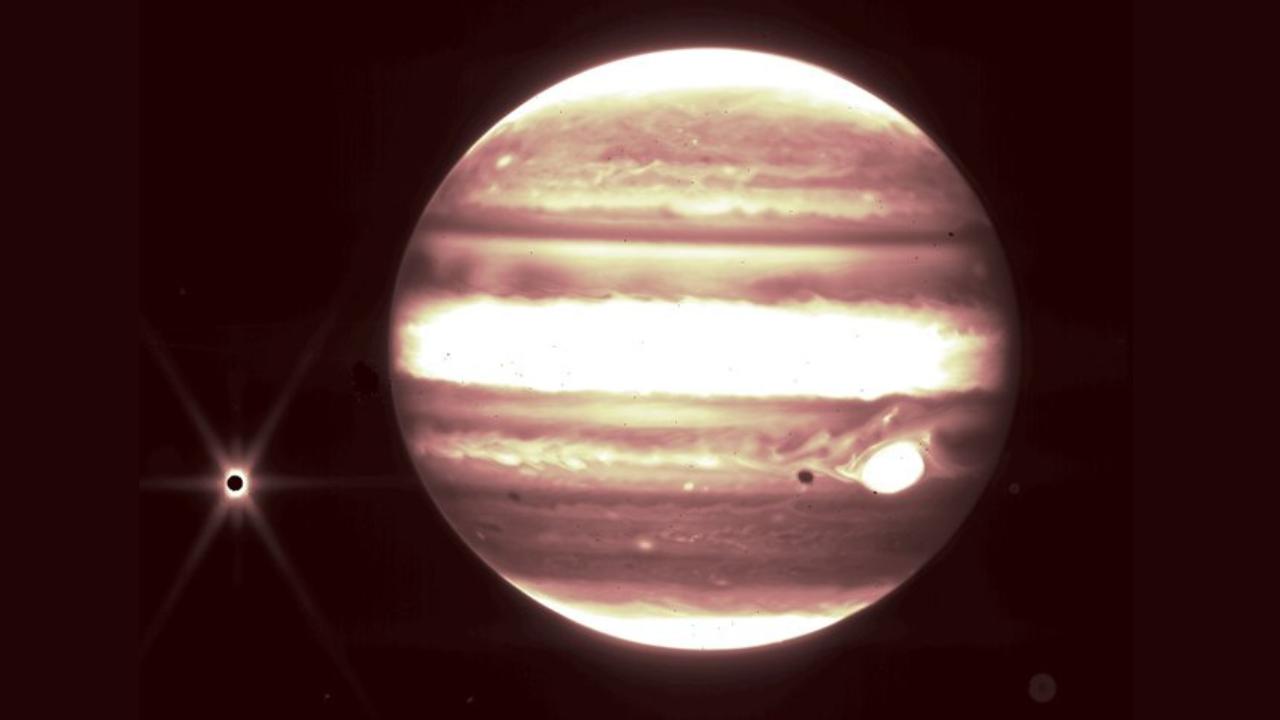The data demonstrates Webb's ability to track solar system targets and produce images and spectra with unprecedented detail, NASA said in a statement

Image credit: Official Twitter Handle of NASA Webb Telescope (@NASAWebb)
After releasing stunning coloured images of thousands of galaxies in our universe, NASA has now unveiled outstanding images of Jupiter and spectra of several asteroids taken by the James Webb Space Telescope.
The data demonstrates Webb's ability to track solar system targets and produce images and spectra with unprecedented detail, the US space agency said in a statement.
New images show distinct bands that encircle Jupiter as well as the Great Red Spot, a storm big enough to swallow the Earth.
"Combined with the deep field images released the other day, these images of Jupiter demonstrate the full grasp of what Webb can observe, from the faintest, most distant observable galaxies to planets in our own cosmic backyard that you can see with the naked eye from your actual backyard," said Bryan Holler, a scientist at the Space Telescope Science Institute in Baltimore.
In one of the images, Jupiter's moon Europa with a probable ocean below its thick icy crust is seen which is the target of NASA's forthcoming Europa Clipper mission.
"What's more, Europa's shadow can be seen to the left of the Great Red Spot. Other visible moons in these images include Thebe and Metis," the space agency said.
Also read: NASA's James Webb telescope detects water on distant planet
Scientists were especially eager to see these images because they are proof that Webb can observe the satellites and rings near bright solar system objects such as Jupiter, Saturn, and Mars.
Scientists will use Webb to explore the question of whether we can see plumes of material spewing out of moons like Europa and Saturn's moon Enceladus.
Additionally, Webb easily captured some of Jupiter's rings. That the rings showed up in one of Webb's first solar system images is "absolutely astonishing and amazing".
Webb was designed with the requirement to track objects that move as fast as Mars, which has a maximum speed of 30 milliarcseconds per second.
Hey @NASASolarSystem, ready for your close-up? As part of Webb’s prep for science, we tested how the telescope tracks solar system objects like Jupiter. Webb worked better than expected, and even caught Jupiter’s moon Europa: https://t.co/zNHc724h9X pic.twitter.com/tW9AT5ah6T
— NASA Webb Telescope (@NASAWebb) July 14, 2022
 Subscribe today by clicking the link and stay updated with the latest news!" Click here!
Subscribe today by clicking the link and stay updated with the latest news!" Click here!










